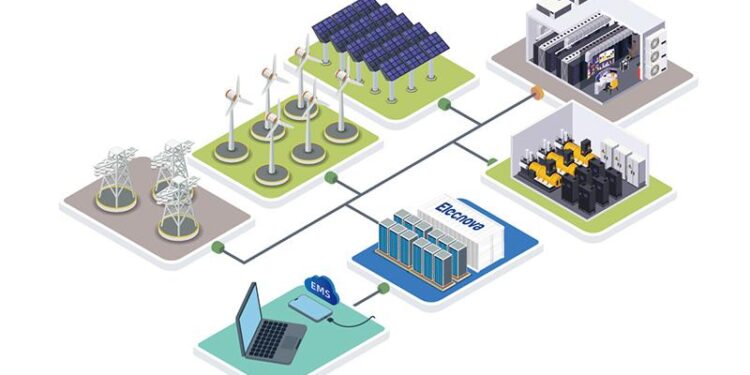Options Technology is set to develop a cutting-edge data centre powered entirely by renewable energy in Iceland, marking a significant step towards sustainable IT infrastructure. Tapping into the country’s abundant geothermal and hydroelectric resources, the initiative aims to deliver high-performance computing capabilities while minimizing environmental impact. This project underscores the growing trend among technology firms to leverage Iceland’s clean energy advantages in meeting escalating data demands with greener solutions.
Options Technology outlines plans for data centre powered entirely by Icelandic renewables
Options Technology has unveiled its ambitious initiative to construct a state-of-the-art data centre fully powered by Iceland’s abundant renewable energy sources. Leveraging the country’s rich geothermal and hydroelectric capabilities, the company aims to achieve a carbon-neutral operational footprint, setting a benchmark for sustainable IT infrastructure in the region. The project highlights Options Technology’s commitment to environmentally responsible growth and anticipates creating significant advancements in energy efficiency and computing performance.
Key features of the upcoming facility include:
- Integration with 100% Icelandic geothermal and hydroelectric power plants
- Advanced cooling technologies utilizing natural cold air and water resources
- Designed capacity to support high-density computing workloads with minimal environmental impact
- Robust disaster recovery and security protocols aligned with international standards
| Project Aspect | Details |
|---|---|
| Location | Reykjavik Region |
| Energy Source | Geothermal & Hydroelectric |
| Expected Completion | Q4 2025 |
| Initial Capacity | 15 MW IT Load |
Integration challenges and solutions for geothermal and hydroelectric energy in data centre operations
Integrating geothermal and hydroelectric energy sources into data centre operations in Iceland presents a unique set of challenges, primarily due to the variability in energy output and the need for seamless power supply to critical infrastructure. Geothermal energy, while providing a consistent base load, can experience fluctuations in steam pressure and temperature that affect turbine performance. Hydroelectric power adds seasonal variability, with generation capacity often influenced by water flow rates tied to weather patterns. To address these concerns, advanced energy management systems incorporating real-time monitoring and predictive analytics are being implemented. These systems optimize energy distribution and dynamically balance load demands, ensuring uninterrupted power delivery while maximizing renewable use.
Key solutions adopted by technology developers include:
- Hybrid energy storage systems combining batteries and pumped hydro storage for buffering supply volatility.
- Modular, scalable power conversion units tailored to rapidly switch between geothermal and hydroelectric inputs.
- Integration of AI-driven predictive models to forecast energy output and adjust operational parameters proactively.
| Challenge | Solution | Benefit |
|---|---|---|
| Steam pressure fluctuations | Automated turbine control systems | Stable power output |
| Seasonal hydro variability | Hybrid energy storage integration | Continuous supply during low flow |
| Load balancing complexity | AI-powered demand forecasting | Optimized energy distribution |
Expert recommendations for scaling renewable infrastructure to support future tech expansions in Iceland
To accommodate the rapid growth of technology sectors reliant on data-heavy operations, Iceland must prioritize strategic expansion of its renewable energy infrastructure. Experts emphasize investing in modular geothermal plants as a scalable and environmentally sound approach, allowing for incremental capacity increases without extensive downtime. Alongside geothermal, harnessing Iceland’s abundant hydro and emerging wind resources in hybrid systems is recommended to balance supply variability and guarantee consistent power delivery to future data centres. Moreover, integrating smart grid technologies will optimize energy distribution, ensuring efficiency and resilience amid fluctuating demand loads.
Collaboration between public entities and private innovators is crucial to streamline project development and facilitate knowledge exchange. Experts also point to the necessity of upgrading existing transmission networks to support higher capacities, reducing bottlenecks in key industrial zones. Below is a comparative overview of recommended renewable expansion strategies, their benefits, and implementation timelines:
| Strategy | Benefits | Estimated Timeline |
|---|---|---|
| Modular Geothermal Plants | Scalable, Low emissions, Continuous output | 2-4 years |
| Hybrid Hydro-Wind Systems | Reliable supply, Diverse resource base | 3-5 years |
| Smart Grid Integration | Optimized distribution, Demand response | 1-3 years |
| Transmission Network Upgrades | Improved capacity, Reduced bottlenecks | 2-6 years |
- Enhance cross-sector partnerships to accelerate innovation and reduce regulatory friction.
- Prioritize sustainable material sourcing for equipment to minimize environmental impact.
- Implement pilot projects to test new technologies and deployment strategies before full-scale rollout.
- Leverage Iceland’s unique geography to maximize renewable energy output with minimal footprint.
Final Thoughts
As Options Technology moves forward with its ambitious plan to establish a renewables-powered data centre in Iceland, the project underscores the growing momentum within the tech industry to embrace sustainable energy solutions. Leveraging Iceland’s abundant geothermal and hydroelectric resources, the initiative not only aims to reduce carbon footprints but also sets a precedent for environmentally responsible data infrastructure. Industry watchers will be keen to observe how this development influences broader trends in green computing and renewable integration in data centre operations worldwide.
















